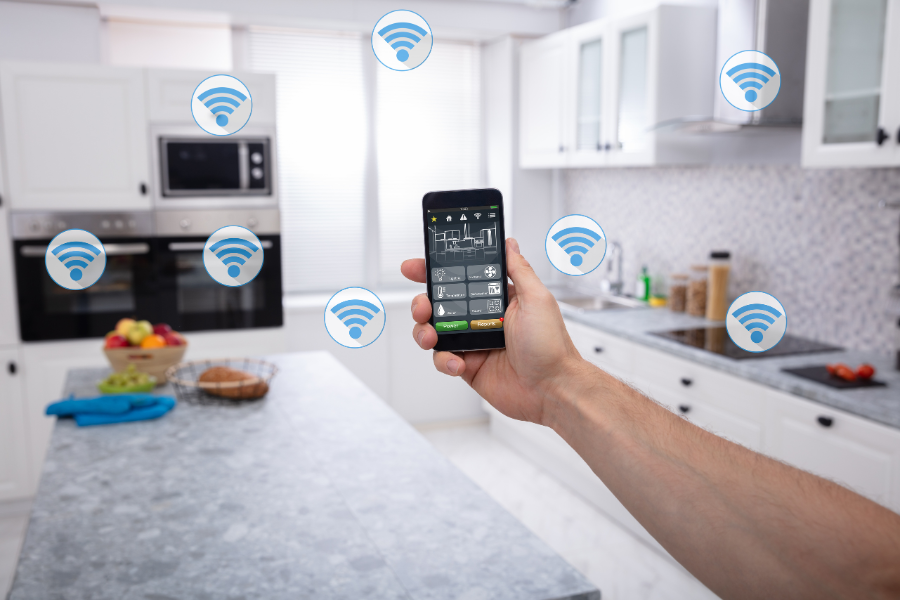
Multi-device automation examples: Top Ways to Streamline Your Smart Home
In today’s fast-paced world, achieving a seamless and efficient home environment is no longer a distant dream. With the advent of smart technology, multi-device automation examples have become a cornerstone for home enthusiasts eager to streamline their households. From controlling lighting to enhancing security, these examples showcase how technology can transform your living space.

Understanding Multi-device Automation
Before diving into specific examples, it’s important to understand what multi-device automation entails. It refers to the integration and coordination of various smart devices within a home to perform tasks automatically. This technology leverages the Internet of Things (IoT) to create an interconnected ecosystem where devices communicate with each other.
Smart Lighting Systems
One of the most popular multi-device automation examples is smart lighting systems. By integrating with platforms like Amazon Alexa or Google Home, you can control your lights using voice commands or smartphone apps. This not only enhances convenience but also contributes to energy efficiency.
Automated Lighting Schedules
With smart lighting, you can set automated schedules. For instance, your lights can gradually brighten in the morning to simulate sunrise, helping you wake up naturally. In the evening, they can dim to create a relaxing ambiance.
Smart Thermostats
Integrating smart thermostats is another excellent example of multi-device automation. These devices learn your preferences over time and adjust the temperature accordingly. This ensures optimal comfort while reducing energy consumption.
Geofencing
Using geofencing, smart thermostats can detect when you’re approaching home and start adjusting the temperature to your preferred setting. This feature provides both comfort and energy efficiency.
Home Security Systems
Multi-device automation has significantly improved home security systems. Smart locks, cameras, and alarms can be integrated to provide comprehensive protection. For more information on smart home security, visit this resource.
Smart Locks
Smart locks allow you to control access to your home remotely. You can provide temporary access codes for guests or service providers, ensuring security without the need for physical keys. Discover more about smart locks here.
Surveillance Systems
Integrating surveillance systems with your smart home setup offers real-time monitoring and alerts. Learn how to integrate surveillance systems here.
Automated Entertainment Systems
Transforming your entertainment experience is another aspect of multi-device automation. By connecting your TV, speakers, and streaming devices, you can create a unified system that responds to your preferences.
Voice-activated Controls
With voice-activated controls, you can play music, adjust volume, or switch channels with simple commands. This hands-free approach enhances convenience and enjoyment.
Kitchen Automation
In the kitchen, automation can simplify your cooking experience. Smart appliances like ovens and refrigerators can be controlled remotely, allowing you to preheat the oven or check the contents of your fridge from your smartphone.
Recipe Assistance
Smart assistants can provide recipe guidance, making it easier to cook meals by offering step-by-step instructions. This is especially useful for home enthusiasts who love experimenting with new dishes.
Energy Management
Multi-device automation also plays a crucial role in energy management. By monitoring energy consumption in real-time, you can identify areas where you can save energy, reducing both your bills and environmental impact.
Smart Plugs
Using smart plugs, you can control appliances remotely and even set schedules to turn them off when not in use, preventing unnecessary energy consumption.
Gardening Automation
For those with green thumbs, gardening automation offers a way to maintain your garden effortlessly. Smart irrigation systems can water your plants based on weather conditions and soil moisture levels.
Weather-based Watering
By using weather data, smart irrigation systems ensure that your garden receives the right amount of water, reducing waste and promoting healthy plant growth.
Integrating with IFTTT
IFTTT (If This Then That) is a powerful tool for creating custom automations. By connecting different devices and services, you can create personalized automation workflows that suit your specific needs. Explore more about using IFTTT for smart homes here.
Challenges and Considerations
While multi-device automation offers numerous benefits, it’s important to consider potential challenges. Compatibility between devices, network reliability, and data security are key factors to address when setting up your smart home.
Ensuring Compatibility
When purchasing smart devices, ensure they are compatible with your existing ecosystem. This prevents issues and ensures a smooth automation experience.
Future Trends in Home Automation
The future of home automation looks promising, with advancements in AI and machine learning set to further enhance the capabilities of smart homes. These technologies will enable smarter decision-making and improved user experiences.
AI-driven Automation
AI-driven automation will allow devices to learn and adapt to your habits, offering a more personalized and intuitive experience.
Conclusion
Embracing multi-device automation can transform your home into a smart haven, offering convenience, efficiency, and enhanced security. By integrating various devices and technologies, you can create a seamless and enjoyable living environment. For a deeper understanding of smart home integration, consider exploring additional resources such as this guide.

FAQ
What is multi-device automation?
Multi-device automation involves connecting and coordinating multiple smart devices to work together, enhancing convenience and efficiency in your home.
How does multi-device automation enhance security?
By integrating smart locks, cameras, and alarms, multi-device automation provides comprehensive security solutions, allowing you to monitor and control access to your home remotely.
What are some challenges of implementing multi-device automation?
Challenges include ensuring device compatibility, network reliability, and addressing potential data security concerns.
This article contains affiliate links. We may earn a commission at no extra cost to you.